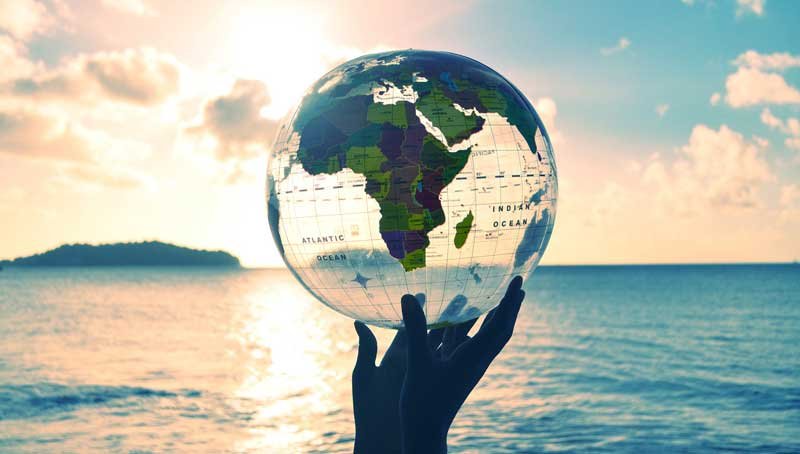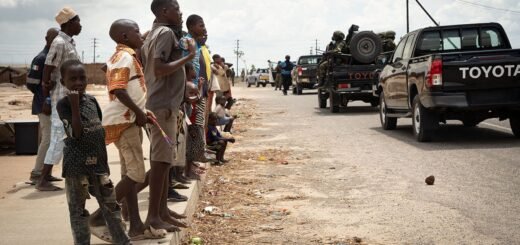How are the SDGs different from the MDGs? An African perspective

Though there exist significant similarities between the Millennium Development Goals launched in 2000 and the Sustainable Development Goals launched in 2015, most notably in the quest to completely roll back poverty and hunger, though they both enjoy a further similarity in that they are clear, concise, time-bound and measurable, there however, exist a number of differences between the two development agendas particularly with respect to the way they both approach development in developing parts of the world like Africa. It is no secret today that the greater portion of the global poor are found in sub-Saharan Africa where 42.3% of the population continues to live on 1.90 dollars or less a day. According to 2017 FAO report ‘Building Resilience for Peace and Food Security’ Africa continued to rank first on the global statistics on hunger(27.4%) that’s about 333.2 million people living in hunger.

What the Sustainable Development Agenda (SDG) has done differently is it has taken a much bolder and ambitious step to end poverty and food insecurity in Africa and other developing countries around the world. That is not to say the SDGs are limited to developing countries. This approach of completely ending poverty and food insecurity in all its forms is a novelty when likened to the Millennium Development Goals which unfortunately was less ambitious and only aimed at halving poverty and hunger levels specifically in Africa and other developing countries.
Thus one peculiarity of the SDGs is that it is much more progressive and aspiring in form and character than the MDGs. Furthermore, in the Sustainable Development Goals, poverty and hunger are treated as separate goals or development objectives unlike in the Millennium Development Goals where both objectives are glued together. Though there exists a direct relationship between poverty and hunger, the strategies of resolving both are not necessarily the same and there exists no guarantee that resolving poverty in Africa will resolve hunger and nutrition-related challenges. Thus by targeting both development challenges separately gives more room for sustainable solutions.
Without focusing too much on the SDGs ambitious quest of ending poverty in all its forms particularly in sub-Saharan Africa, and its progressive nature compared to the MDGs, it will also be fair to say that the SDGs are by far much more comprehensive as it looks beyond the element of poverty and hunger to include other elements which constitute a major threat to livelihoods in Africa such as the respect for human rights, good governance and strong institutions, peace and stability which were widely under looked by the MDGs in its approach to development in Africa. Truth be told there is no way Africa can attain meaningful sustainable development if factors like peace, insecurity and the non-respect of human rights and freedoms are not balanced up. Africa’s development potentials can only be unleashed when mobilization around such fundamental factors are actively integrated in to development practice.
School enrolment pre MDGs was quite low in Africa. When the MDGs thus came in to affect it focused primarily on increasing enrolment in schools (quantity) and gave little attention to the quality of education for the African youth bulk. This particular goal was very successful as sub-Saharan Africa before 2015 had already witnessed an increase of primary school enrollment from 59% to 77%.[1]
However, cognizant of the regional fertility rate of 5.1, compared to a global average of 2.4, billion people, the educational urgency didn’t have to simply focus on quantity but priority had to also be given to educational quality. The SDGs were thus formulated to make the difference in this respect. So in 2016 attention shifted from just educational enrolment to also include educational quality. The hope is, sub-Saharan Africa will catch up with other regions of the world in terms of fully developing its knowledge capita; the ability of her individual citizenry and the assembly of nations in the region to fully realize their potentials.
A major difference between the two development agendas is glaring when one looks at the processes that eventually lead to their adoption. It is fair to say the SDG is unique in this respect. The SDG is perhaps one of the most inclusive and participatory development processes the world has ever known, as it took a bottoms-up approach. This by implication meant the process directly benefited from impulse from the global citizenry, businesses, educational institutions, civil society organizations and governments. This SDG approach is quite different from the top-down approach of the MDGs. A significant proportion of the African populace post 2000 actually considered the MDGs as a development agenda that was being forced down their throats without due consideration of their opinions and views. Africa today like most other developing countries the world over feel included in the present development agenda.
It is ultimately fair to say the UN Sustainable Development Agenda is an inclusive and participatory moral compass for
[1] Germano Mwabu and Xanthe Ackerman. (2013) EDUCATION PLUS DEVELOPMENT. Focusing on Quality Education in Sub-Saharan Africa. Online.


















